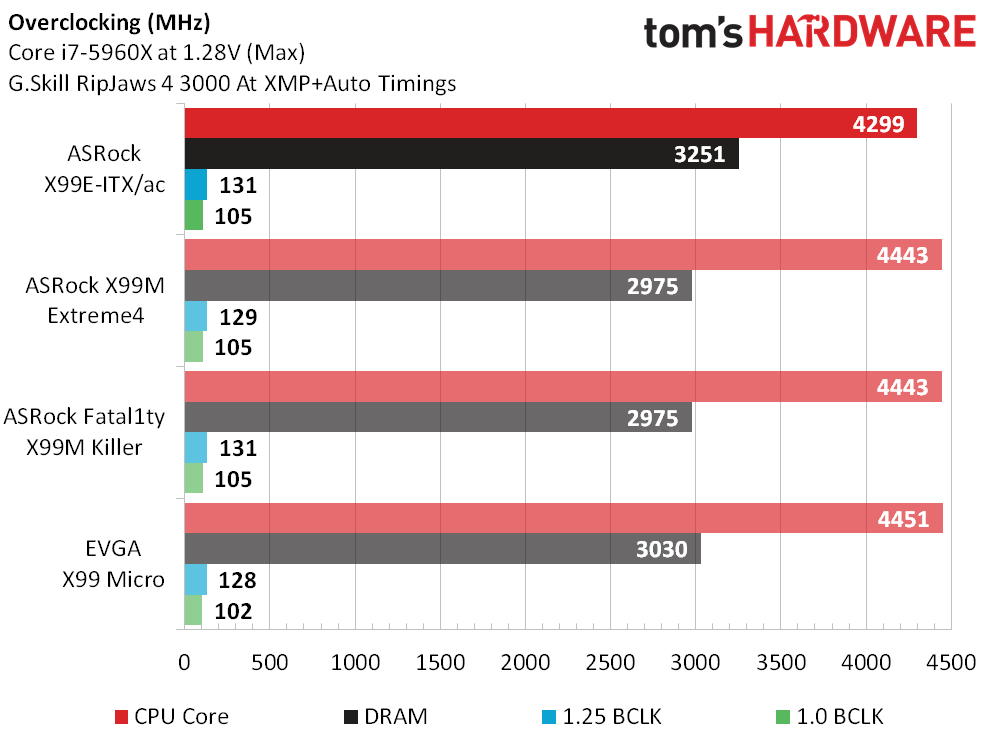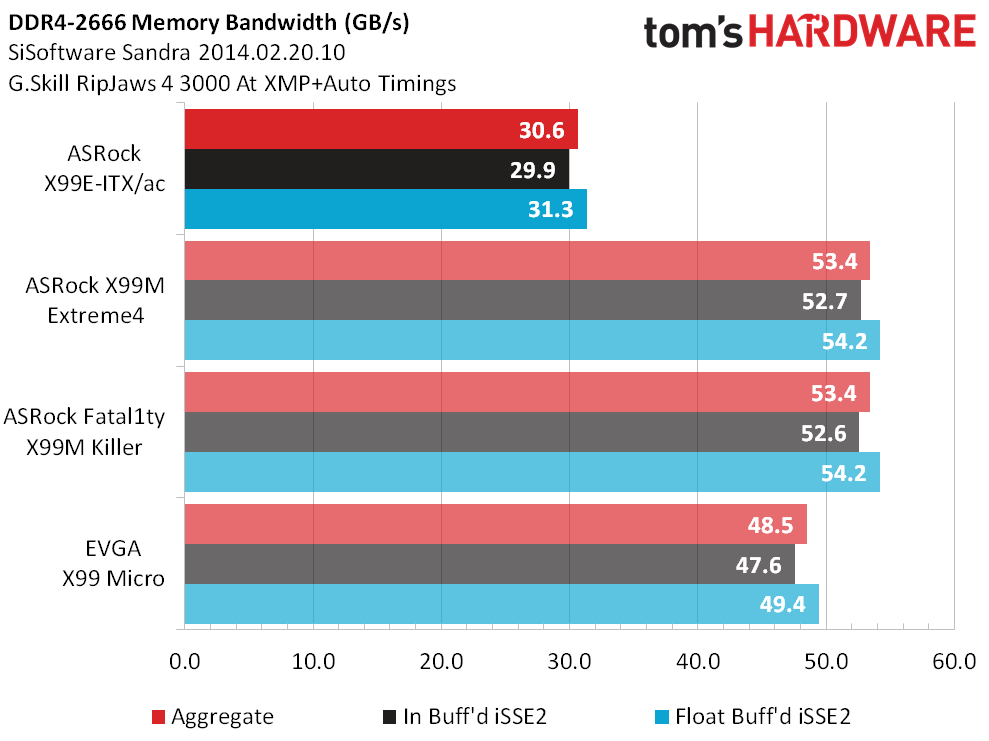ASRock X99E-ITX/ac Motherboard Review
Why you can trust Tom's Hardware
Overclocking Performance
BIOS Frequency & Voltage Settings
The X99E-ITX/ac includes a similar range of settings compared to its larger siblings, lacking only a little PCH and DRAM voltage for the sake of compact system thermal limits. Yet, even those two reduced settings far exceed anything we’d need for safe-and-sane O/C evaluation.
As discussed in the firmware section of this review, thermal throttling forces the use of a lower CPU core voltage to retain a consistent O/C frequency. At 1.225V CPU core, the board still pushes our Core i7-5960X to 4.3GHz. This is also the first ASRock motherboard we’ve tested to exceed DDR4-3200, though we’re not sure how much of this feat is due to firmware advancement, and how much is due to the missing third and fourth DIMMs.
The DDR4-2666 test lets us see how different boards optimize timings for non-native data rates. The X99E-ITX/ac has only half the memory channels of its microATX competitors, yet still produces more than half the bandwidth.
Get Tom's Hardware's best news and in-depth reviews, straight to your inbox.
Current page: Overclocking Performance
Prev Page Power, Heat And Efficiency Next Page Value Analysis-
Crashman Reply
Sorry, I don't have any DDR4 SODIMMs yet.15937166 said:How about a test of the ASRock EPC612D4I. It has four memory slots.
-
uglyduckling81 Is it just me or does the lets compare to other boards bit not contain any other boards to to compare against?Reply -
wtfxxxgp ReplyIs it just me or does the lets compare to other boards bit not contain any other boards to to compare against?
True. However, that section is pointless as it has no direct rivals - I think they're using a standard template and they had to fill something in there. -
apache_lives For that socket/platform its almost a complete waste - all those unusable memory channels and pcie lanes that make the 2011 platform high end have been stripped awayReply -
Crashman Reply
it's really just for people who want more cores. So, feel free to ridicule anyone who tries to pair it with an E5-1620 :p15937458 said:For that socket/platform its almost a complete waste - all those unusable memory channels and pcie lanes that make the 2011 platform high end have been stripped away -
Daniel Ladishew Testing this on the stock cooler is useful information, but this mobo will only shine when water cooled. I'd like to see the tests repeated with a closed loop cooler attached. Either the Cooler Master or Corsair H100 (which i've heard will work with that bracket as well). If the point is to pack lots of cores into a small form factor, not overcoming the thermal throttling seems like a weak test.Reply -
TechyInAZ While not as good as it's micro atx counterparts (obviously), I am very impressed by this motherboard.Reply
So if somebody that doesn't need all the PCIE lanes or memory lanes but just the pure power of a hexa/octo core CPU in a small package, then this is the best solution. -
goinginstyle So other X99 boards get ripped for not being able to do 4-way SLI or 3-way with a PCIe RAID controller but this one gets a pass on those items plus numerous others (lower OC, lack of memory expansion, high price, etc) and receives an award. The board reviews here are just becoming a joke.Reply


